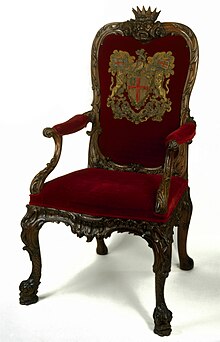
Back Ministr pro Indii Czech Ysgrifennydd Gwladol India Welsh Secretary of State for India German India asjade riigisekretär Estonian Secrétaire d'État à l'Inde French भारत के राज्य सचिव Hindi Sekretaris Negara untuk India ID Segretario di Stato per l'India Italian インド大臣 Japanese ਭਾਰਤ ਲਈ ਰਾਜ ਸਕੱਤਰ Punjabi
This article needs additional citations for verification. (January 2023) |
| Secretary of State for India | |
|---|---|
 Royal Arms as used by His Majesty's Government | |
| India Office | |
| Member of | British Cabinet Privy Council |
| Seat | Westminster, London |
| Appointer | The British Monarch on advice of the Prime Minister |
| Term length | At His Majesty's pleasure |
| Constituting instrument | Government of India Act |
| Precursor | President of the Board of Control |
| Formation | 2 August 1858 |
| First holder | Lord Stanley |
| Final holder | William Hare, 5th Earl of Listowel |
| Abolished | 14 August 1947 |
| Deputy | Under-Secretary of State for India |


His (or Her) Majesty's Principal Secretary of State for India, known for short as the India secretary or the Indian secretary, was the British Cabinet minister and the political head of the India Office responsible for the governance of the British Indian Empire, including Aden, Burma and the Persian Gulf Residency. The post was created in 1858 when the East India Company's rule in Bengal ended and India, except for the Princely States, was brought under the direct administration of the government in Whitehall in London, beginning the official colonial period under the British Empire.
In 1937, the India Office was reorganised which separated Burma and Aden under a new Burma Office, but the same secretary of state headed both departments and a new title was established as His Majesty's Principal Secretary of State for India and Burma. The India Office and its secretary of state were abolished in August 1947, when the United Kingdom granted independence in the Indian Independence Act, which created two new independent dominions, India and Pakistan. Burma soon achieved independence separately in early 1948.